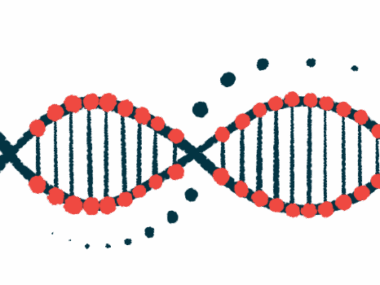Study finds DNA contamination persists in SMA newborn screening
Researchers propose cut-off values to differentiate samples
Written by |

DNA contamination from sample processing remains a major problem in spinal muscular atrophy (SMA) newborn screening, a study reported.
Researchers proposed analytic cut-off values to clearly separate samples testing positive for SMA from negative samples.
Data also showed that adding a freezing step before DNA extraction led to significantly higher amounts of DNA for screening.
The study, “Quality considerations and major pitfalls for high throughput DNA-based newborn screening for severe combined immunodeficiency and spinal muscular atrophy,” was published in the journal PLOS One.
Numerous studies demonstrate that starting SMA disease-modifying therapies as soon as possible provides the greatest benefits to SMA patients, highlighting the need for early diagnosis.
Freezing improves DNA yield
Many countries have implemented newborn screening programs to detect SMA at birth. Blood is collected from a small heel prick and placed onto a filter paper card. When dried, small areas of the blood spot are punched out of the card, added to a buffer solution, and DNA extracted and screened for the genetic defects associated with SMA.
For their report, researchers in Germany compared various methods used in the newborn screening process.
The team used dried blood spots from archived blood samples collected from SMA patients and people with severe combined immunodeficiency (SCID), a group of at least 20 rare genetic disorders marked by deficiency in the function of immune T-cells or B-cells.
Newborn screening for SMA uses all of a person’s genetic material, while screening for SCID detects T-cell receptor excision circles (TREC), which are small circular DNA molecules formed during the rearrangement of T-cell receptor genes. Screening for SCID is more challenging because the number of TRECs, which are reduced in SCID, is relatively low, even in healthy individuals.
Researchers screened samples using the polymerase chain reaction, or PCR, a process whereby small segments of the genetic material are amplified via a temperature cycling reaction that repeats multiple times. Cq values, the number of cycles in which the signal crosses a certain detection threshold, were measured. Lower Cq values indicated a higher initial amount of genetic material.
First, the team assessed whether adding a freezing step to the DNA isolation process would improve the yield of DNA. For SMA samples, the mean Cq value without freezing was significantly higher than those after freezing (27.8 vs. 25.02). Similar results were found using SCID samples.
“The added freezing step indeed resulted in a significant increase in [DNA] yield and thus in the number of TRECs detected,” the researchers wrote.
Calculating a cut-off point
Comparable amounts of DNA were extracted using either an in-house DNA extraction buffer or a buffer solution used in fully automated systems known as MagNA Pure 96 extraction, which uses magnetism to isolate DNA.
Pre-analytic DNA carry-over, which refers to contaminating DNA from sample collection that may interfere with screening, was then assessed. Analysis found DNA contamination from the punching procedure in many cases for both DNA from SMA and SCID samples.
To compensate for contamination, the team calculated a cut-off by subtracting the Cq value from the lowest Cq value of the negative samples, which allowed for a clear separation of true positive samples. Samples with a Cq value greater than 31.00 for SMA and TRAC would be considered possible contaminations.
“Our data highlight the importance of an appropriate internal laboratory cut-off and an understanding of potential contamination risks and sources,” the team wrote.
Punches were taken from the middle of dried blood spots and compared with those from the edges. SMA samples had significantly more DNA in middle punches than on the edge. The analysis for SCID showed the same pattern regarding the punching location. “This might be due to a physical separation of blood components in the filter paper,” the researchers noted.
“Pre-analytic DNA carry-over remains a major problem in correctly separating negative from positive screening results,” the researchers concluded. “Therefore, contaminating factors have to be identified, analysed, and validated to reduce the risk of false results by defining the appropriate cut-offs.”








